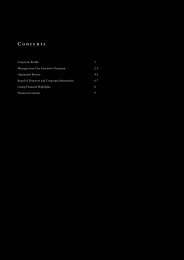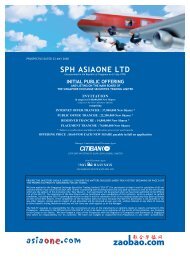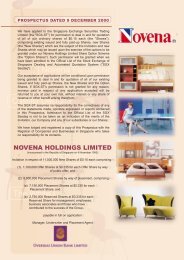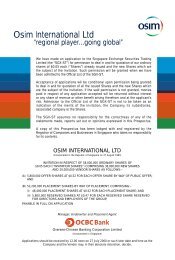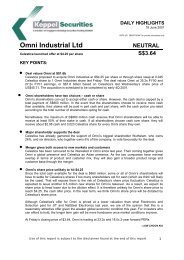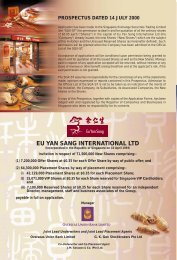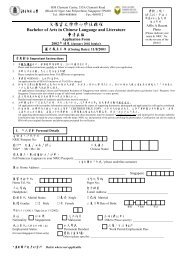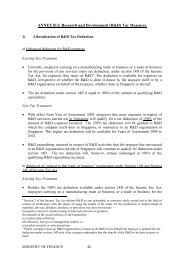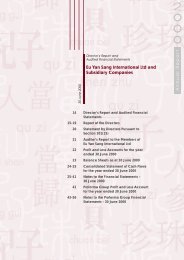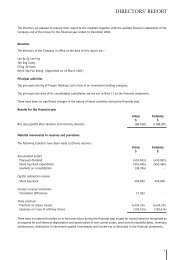final output
final output
final output
Create successful ePaper yourself
Turn your PDF publications into a flip-book with our unique Google optimized e-Paper software.
Inventory Management System<br />
We have approximately 50,000 square feet of warehouse space, where our commonly used materials<br />
such as uPVC pipes and fitting, copper pipes and fittings and electrical cables are kept. We have a<br />
computerised inventory system that provides on-line information on our stock levels. This inventory<br />
system allows us to schedule and plan for our stock requirements to ensure we have sufficient<br />
material to complete a project and not cause a delay in the completion of our M&E services.<br />
Stocktakes are conducted on an annual basis, both for us to monitor our stock levels and to check<br />
against the quantity captured in our inventory system. We also perform weekly random checks on<br />
selected items of inventory. To date, we have no material adjustments arising from discrepancies<br />
between our physical stock and inventory system. As at 30 September 2000, we had approximately<br />
$1.5 million of inventory at cost as shown at pages 43 and 106 of this Prospectus.<br />
We intend to upgrade our inventory system by installing computer terminals and inventory software<br />
that would allow us to update our inventory records and monitor movement of inventory on-line. We<br />
plan to install additional storage shelves to optimise the utilisation of our warehouse space and<br />
purchase new equipment to lift and move heavy items in our warehouse. The estimated cost of<br />
upgrading our inventory system and purchases of equipment is estimated at $0.5 million as described<br />
on page 26 of this Prospectus. We expect the new inventory system to be completed by December<br />
2001.<br />
Government Regulations<br />
Labour Policies<br />
The Singapore construction industry is dependent on foreign labour due to a small local construction<br />
labour force. Any changes in the labour policies and laws on the employment of foreign labour would<br />
therefore have an impact on our ability to employ such workers and may affect our labour costs.<br />
The Ministry of Manpower regulates the employment of foreign workers in Singapore. Presently, the<br />
Ministry of Manpower imposes a levy of $470 per month on every unskilled foreign worker and $30<br />
per month on every skilled worker. The Ministry of Manpower also limits the number of foreign<br />
workers that companies can employ by setting a ratio of foreign workers to local workers under a<br />
company’s employment. The Ministry of Manpower sets the ratio at five foreign workers to one local<br />
worker for all companies.<br />
Any changes to the rates of foreign workers’ levies and the above ratio may affect our ability to<br />
employ foreign workers. As a result, our work schedules, the number of projects secured by us and<br />
our financial performance may be affected.<br />
We currently have approximately 430 foreign workers which accounts for approximately 76.0% of<br />
our workforce. In FY 2000, foreign workers’ levies totalled $1,100,000 and accounted for approximately<br />
19% of our net profit before tax.<br />
BCA Regulations<br />
Certain aspects of our M&E work processes are subject to the provisions of the Building Control Act<br />
(Cap 29) and the Building Control Regulations (Cap 29) (“BCA Regulations”). The BCA Regulations<br />
require our work processes, our supervising staff and the materials utilised in our work process to<br />
comply with standards imposed under the BCA Regulations and the Code of Practice (“Code”).<br />
Any changes to the BCA Regulations and the Code may affect our work processes, which may<br />
affect our costs and the time taken to complete the projects.<br />
40



